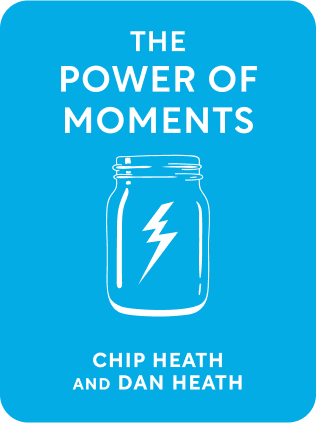

This article is an excerpt from the Shortform book guide to "The Power of Moments" by Chip Heath and Dan Heath. Shortform has the world's best summaries and analyses of books you should be reading.
Like this article? Sign up for a free trial here .
What is self-insight? How can you prompt self-insight on demand?
Self-insight is your metacognitive understanding of your psyche and behavior (your thoughts, feelings, motivations, etc.). According to Chip and Dan Heath, the authors of The Power of Moments, the best way to gain self-insight is to put yourself in situations that expose you to the possibility of failure.
Keep reading to learn how risking failure translates into valuable self-insight.
Set Up a Situation for Self-Insight
The Heaths explain that using insight to create defining moments for yourself depends on pushing your boundaries—you must put yourself in situations that expose you to the possibility of failure. This is because the process of stepping outside of your comfort zone and risking failure leads to what psychologists call “self-insight”: an understanding of your values, abilities, goals, and motivations.
Exposing yourself to the risk of failure can only go one of two ways: either you succeed, or you fail. While these outcomes may not seem equally valuable, the Heaths assert that both should be celebrated as valuable learning opportunities.
It’s obvious why exposing yourself to the risk of failure and then succeeding would be a cause for celebration. It stirs up positive emotions, bolsters your confidence in your abilities, and at times can prompt positive changes in your life.
- For example, while doing volunteer work on the weekends you realize, “This is exactly what I want to spend the rest of my life doing! How can I make this my full-time job?”
(Shortform note: This type of discovery—realizing how you want your future to be, and therefore making positive changes in the interest of working toward a goal rather than pushing away from past behavioral patterns—can be understood as a crystallization of desire, an inverse of the crystallization of discontent.)
It’s much less obvious why risking failure—and then actually failing—is also something to celebrate (or at least, not dread). Failure certainly doesn’t stir up the same sort of positive emotions as success. However, the Heaths emphasize that negative emotions are especially helpful in creating meaningful moments defined by insight.
| The Price Tag of Failure Barbara Frederickson and Daniel Kahneman (author of Thinking, Fast and Slow), when developing the peak-end rule, found that the brain uses the emotional peaks of experiences as “price tags” or reference points when recalling an experience and making decisions based on it. We use these reference points to determine whether repeating the experience is worth the “cost.” The negative emotions of failure create a reference point that acts as a type of warning: “If you do this again or if you continue on this route, it will cost you—you’ll feel these negative emotions again.” For example, many addicts, when deciding to start treatment, recall going through the thought process of realizing that they could no longer tolerate the emotional “cost” of repeating the same behaviors. |
The Heaths go on to discuss the two possible conclusions that this “warning” prompts:
Conclusion A: The cost is worth it. You realize that you are strong enough to endure the cost of the experience and are willing to do it again, even if you risk feeling negative emotions again.
- A sprinter experiences a humiliating defeat. She thinks to herself, “That was awful, but if I can push through that, I can push through anything.” She’s dedicated enough to continue the sport, even if it means experiencing failure again in the future.
Conclusion B: The cost is too high. You realize that the cost of the experience is too high, and you don’t want to risk feeling these emotions again. You experience your crystallization of discontent.
- Imagine that you leave your corporate job to become the owner of a coffee shop. You like the work and you’re proud to have your own business, though the customers are demanding and the hours are very long, you’ve been having trouble finding good baristas to work for you, and the income is unpredictable. One day, you’re frazzled and you accidentally grab a cake out of the oven without a mitt, burning yourself badly. Suddenly, you realize, “I hate this job. I’m so stressed out all the time and I miss the structure of the office.” Your crystallization of discontent leads you to sell your coffee shop and head back into the corporate world, where you are much happier. You realized that the cost of owning a coffee shop was too high, and not something you wanted to experience any longer.
| How to Make Failure Meaningful While the Heaths explain how failure can provide a valuable examination of your motivations and values, they don’t explore a crucial part of failure that ensures that it becomes a meaningful experience rather than a forgettable mistake: your response to it. There are numerous healthy, meaningful ways you can respond to failure in a way that serves to create a defining moment: Ask the right questions: Studies have found that responding to failure by asking “what” rather than “why” leads to more positive outcomes. This is because questions starting with “why” usually invite rationalization or denial. On the other hand, questions starting with “what” jumpstart the process of learning from your situation and finding solutions based on gathered information. For example:Instead of asking, “Why is owning a coffee shop so stressful?” try asking yourself, “What parts of owning a coffee shop do I like, and what parts are making me feel stressed?” Instead of asking, “Why don’t my new team members seem to like me?” ask yourself, “What can I do to make sure my team members and I are working well together?” Practice self-compassion: Many people respond to failure with self-criticism, but this doesn’t help you recover from failure—rather, it forces you to ruminate on the experience and develop feelings of shame about it. Instead, respond with self-compassion, the process of forgiving yourself for past mistakes as Tara Brach discusses in her book Radical Acceptance. Reacting with self-compassion allows you to think about the mistake clearly and glean important lessons from it. Focus on growth: Consciously respond to failure with positive messages that focus on learning and growth. In her book Grit, Angela Duckworth gives several examples of how you might accomplish this:Instead of, “My pitch was a disaster,” you might try, “My pitch didn’t go as well as I wanted. What can I improve next time?” Instead of, “Getting a promotion in this field is hard, so I shouldn’t feel bad that I haven’t gotten one,” make the subtle change toward, “Getting a promotion in this field is hard, so I shouldn’t feel bad that I haven’t gotten one yet.” |
Why You May Need a Mentor
The Heaths note that not all self-insight requires large risks—it may come from small, everyday risks like trying a new drink or taking a new class. These experiences are easy to do on your own, as the cost of failure is generally low.
However, you’ll likely have a much harder time pushing yourself into the most valuable experiences—those that come with a much higher cost of failure, such as taking on more responsibility at work, moving to a new city, or changing your career. You’re not alone. There’s a global upward trend in perfectionism: People are holding themselves to increasingly high standards and opting to forego growth in favor of avoiding the possibility of failure. To break out of this mindset, it’s helpful to seek out a mentor who can support you through the process of leaving your comfort zone and exposing yourself to the possibility of failure.
Mentors can take many forms. They’re not only found in your career field. A mentor can be anyone you admire and respect, whose advice is trustworthy and in your best interest. A parent, a teacher, a colleague, a boss, or an accomplished friend can all be mentors.
(Note: Read our guide to Ryan Holiday’s Ego Is the Enemy to learn how to choose an appropriate mentor, ask them for their help, and develop a mutually beneficial relationship.)
The following section is geared toward mentors trying to push mentees into defining moments of self-insight. However, it can also help you, as a mentee, understand what makes for a great mentor and the benefits of seeking one out.

———End of Preview———
Like what you just read? Read the rest of the world's best book summary and analysis of Chip Heath and Dan Heath's "The Power of Moments" at Shortform .
Here's what you'll find in our full The Power of Moments summary :
- How to make everyday experiences meaningful and memorable
- A look at the four elements that create meaning
- How your senses can play a role in elevating everyday moments






